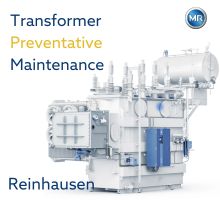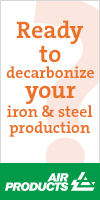EPA and DEC Report Progress at Tonawanda Coke
07/21/2011 - The U.S. Environmental Protection Agency and New York State Department of Environmental Conservation announced progress in their agencies’ investigation of the Tonawanda Coke Corp. and launched a new community-wide effort to reduce pollution.
The U.S. Environmental Protection Agency’s Regional Administrator Judith A. Enck and New York State Department of Environmental Conservation (NYSDEC) Regional Director Abby Snyder announced progress in their agencies’ investigation of the Tonawanda Coke Corp. and launched a new community-wide effort to reduce pollution in the community.
Under agreements just reached between EPA, NYSDEC, and the Tonawanda Coke, the company will improve its operations and monitoring for coke oven gas leaks, repair equipment, and upgrade pollution controls. Combined with previous actions taken to reduce harmful benzene emissions from the facility, these actions are expected to cut benzene emissions by at least two-thirds.
In addition, EPA will provide a $130,000 pollution prevention grant to the New York State Pollution Prevention Institute to lend technical assistance to businesses in Tonawanda, N.Y., to conduct detailed environmental assessments of their manufacturing processes and improve operations in a way that significantly reduces their impact on the environment. The effort will focus on: minimizing waste, reducing hazardous and non-hazardous waste, water conservation, efficient use of raw materials and energy conservation. The project will include eight companies.
EPA is also awarding a $100,000 Community Action for a Renewed Environment grant to the Clean Air Coalition of Western New York to work with the Tonawanda community in prioritizing environmental risks and concerns that the community wants to address, and finding ways to reduce the health and environmental risks they may pose. The Coalition will share the compiled information with stakeholders and facilitate a prioritization process. The community group will sponsor capacity building workshops, conduct basic air testing in local areas of concern, and make innovative use of photography to document environmental problems.
Tonawanda’s industrial zone has one of the highest concentrations of air-polluting facilities in the state. Within a two-mile area, the town has 53 facilities, including a coke plant, two petroleum distribution terminals, multiple chemical bulk storage terminals, a coal-burning power plant, a tire manufacturing plant, and two interstate highways.
EPA and the NYSDEC are conducting a full evaluation of the Tonawanda Coke facility to determine its compliance with federal and state laws and regulations, following NYSDEC’s community air-quality monitoring study, which revealed that Tonawanda Coke was emitting high levels of benzene. As a result of that work, EPA and NYSDEC have taken several enforcement actions against the facility over the past several years, including actions under the Clean Air Act, Clean Water Act and Resource Conservation and Recovery Act.
Under the new agreements, Tonawanda Coke will complete process improvements and repairs in the byproducts area of the plant that will dramatically reduce toxic emissions. Specifically, the company will improve operation of the ammonia scrubber, light oil scrubber, tar precipitator, piping, process vessel vents, tar decanter, tar storage tank, and byproducts gas pipes. It will install a new ammonia scrubber at the plant and modify a piece of equipment that is designed to cool the coke oven gas to condense out tars, naphthalene, and other impurities.



-(220-x-200-px)-(130-x-130-px)-(220-x-200-px).jpg?lang=en-US&ext=.jpg)
Veolia.gif?width=200&height=200&mediaprotectionhash=4deca34a0d5a00013b5a0ccdc2dcf98fd2c17aabb57eb7bbb27200552f29c247&ext=.gif)





